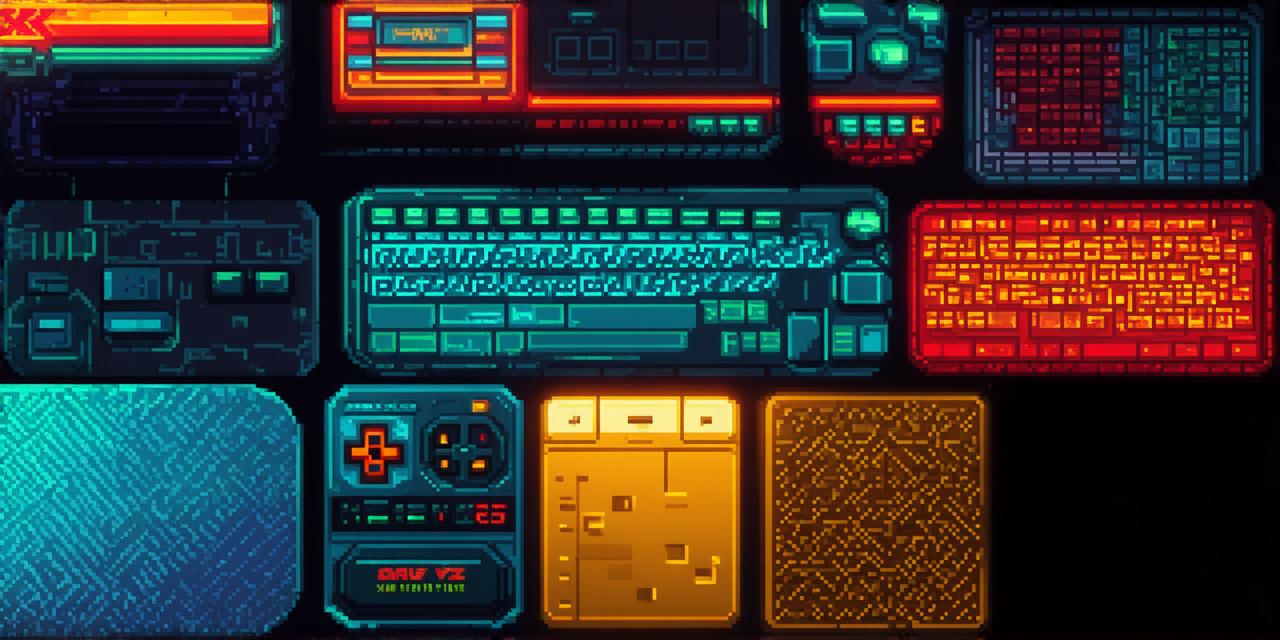1. Define Your Game Concept
Before you begin designing your game, it’s essential to have a clear idea of what you want to create. Start by answering these questions: What type of game do you want to make (e.g., action, adventure, puzzle)? Who is your target audience? What are the key features and mechanics that will set your game apart from others in the genre?
2. Create a Game Design Document (GDD)
Once you have a solid concept, it’s time to create a GDD. This document outlines the details of your game, including its story, characters, levels, and systems. It also includes a project timeline, budget, and resources required for development. A GDD is an essential tool that will help you stay organized and on track throughout the design process.
3. Develop Your Game Mechanics
The mechanics of your game are the rules and systems that govern how it works. This includes everything from movement and combat to resource management and AI behavior. To create a fun and engaging game, it’s essential to have well-designed mechanics that are intuitive for players to understand and master. You can test your mechanics using prototypes or playtesting with potential players.
4. Create Your Game Assets
Game assets include everything from characters and environments to sound effects and music. These assets bring your game to life and help create an immersive experience for players. It’s essential to have high-quality assets that are optimized for performance on different platforms. You can use various tools and software to create your game assets, including 3D modeling programs, texturing applications, and audio editing software.
5. Write Your Game Code
Once you have all the assets in place, it’s time to start coding. The code is the backbone of your game, and it brings all the different elements together. There are many programming languages and engines that you can use for game development, including Unity, Unreal Engine, and C++. It’s essential to learn at least one language and become familiar with the basics of game development before diving in.
6. Test Your Game and Refine Your Design
Testing is an essential part of the game design process. You need to test your game thoroughly to identify any bugs or issues that could negatively impact player experience. It’s also important to get feedback from players to refine your design and make it better. You can use various testing methods, including playtesting, user testing, and A/B testing.
7. Publish Your Game
When you’re ready to share your game with the world, it’s time to publish it on a gaming platform. There are many platforms to choose from, including Steam, Xbox Live, and PlayStation Network. To publish your game, you need to follow the platform’s guidelines and submission process. It’s essential to have a clear understanding of the requirements and timelines for each platform.
8. Marketing Your Game
Finally, marketing is an essential part of getting your game noticed by potential players. You can use various marketing strategies, including social media advertising, influencer partnerships, and PR campaigns. It’s important to have a clear marketing plan in place before launching your game to ensure that you reach the right audience.
FAQs
1. What programming languages do I need to learn for game development?
There are many programming languages used in game development, but some of the most popular ones include C++, Unity, and Unreal Engine. It’s essential to learn at least one language and become familiar with the basics of game development before diving in.
2. How long does it take to develop a video game?
The time it takes to develop a video game depends on the complexity of the project and the size of your team. Simple games can be developed in a few months, while more complex games can take several years. It’s essential to have a clear project timeline and budget in place before starting development.

3. Do I need a degree in game design to start designing my own video game?
While a degree in game design can be helpful, it’s not necessary to start designing your own video game. With the rise of online resources and tutorials, anyone with a passion for game development and the willingness to learn can create their own game.
Summary
Designing a video game is an exciting and challenging process that requires creativity, technical skills, and a deep understanding of game mechanics. By following the steps outlined in this guide and being willing to learn and adapt, you can start designing your own video game and share it with the world. With dedication and hard work, your game has the potential to become a hit among players and gamers alike.
